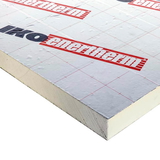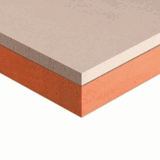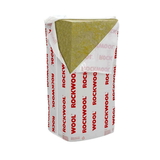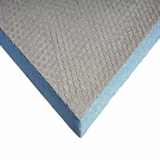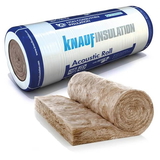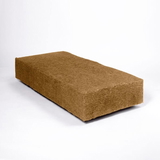- Blogs
- Insulating a Dormer Bungalow to Preserve Home Comfort Levels
Insulating a Dormer Bungalow to Preserve Home Comfort Levels

Dormer bungalows are a popular type of home in the UK, especially for those who want to maximise the space and light in their loft conversions. However, dormer bungalows can also pose some challenges when it comes to insulation, as they have complex roof shapes and often lack adequate ventilation. This can result in heat loss, dampness, condensation, and high energy bills.
If you want to improve the comfort and efficiency of your dormer bungalow, you need to consider insulating it properly. Insulation can help you keep your home warm in winter and cool in summer, reduce your carbon footprint, and save money on your heating and cooling costs. But how do you go about insulating a dormer bungalow? Where do you start, and what are the best options for your roof, windows, and floors?
In this article, we will guide you through the process of insulating a dormer bungalow, and answer some of the most common questions you may have. We will also provide you with some tips on how to find a professional to do the job for you, and what benefits you can expect from insulating your dormer bungalow.
Why Does a Dormer Bungalow Need Insulation?
Insulating a dormer bungalow is important for several reasons:
- It can improve the thermal comfort and energy efficiency of your home, as it reduces heat loss through the roof and walls, and keeps your loft warm in winter and cool in summer.
- It can save you money on your heating and cooling bills, as you will need less energy to maintain a comfortable temperature in your loft.
- It can prevent condensation and damp problems, as it reduces the risk of moist air from inside your loft meeting cold surfaces and forming water droplets. This can damage your roof structure, plaster, paint, and furniture, and cause mould growth and health issues.
- It can increase the value and appeal of your home, as it makes your loft more usable and attractive, and meets the building regulations and standards for insulation.
Insulating a Dormer Bungalow: Where to Start
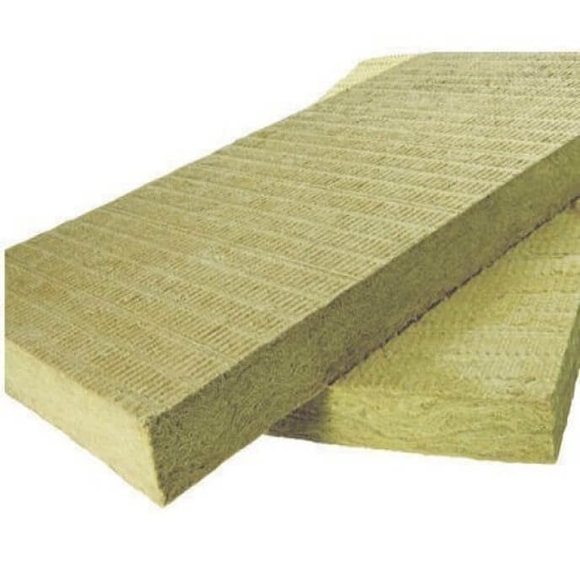 Before you start insulating your dormer bungalow, you need to assess the current condition of your home and identify the areas that need improvement. You can do this by conducting a home energy audit, which is a detailed inspection of your home’s energy performance. A home energy audit can help you find out how much heat you are losing through your roof, windows, and floors, and how much you can save by insulating them.
Before you start insulating your dormer bungalow, you need to assess the current condition of your home and identify the areas that need improvement. You can do this by conducting a home energy audit, which is a detailed inspection of your home’s energy performance. A home energy audit can help you find out how much heat you are losing through your roof, windows, and floors, and how much you can save by insulating them.
You can either hire a professional to do the home energy audit for you, or you can do it yourself using a DIY kit or an online tool. Either way, you will need to gather some information about your home, such as its size, age, construction type, heating system, and energy bills. You will also need to measure the thickness and type of insulation you already have in your roof, walls, and floors, and check for any signs of dampness, mould, or draughts.
Once you have completed the home energy audit, you will have a clear idea of where you need to focus your insulation efforts, and how much insulation you need to add. You will also be able to prioritise the areas that will give you the most benefits in terms of comfort and savings. Generally speaking, the roof is the most important area to insulate, as it accounts for about 25% of the heat loss in a typical home. Next are the windows, which can lose up to 20% of the heat, and then the floors, which can lose up to 15%.
How to Insulate a Dormer Bungalow Roof
Insulating your dormer bungalow roof can make a big difference in your home’s comfort and energy efficiency, as it can prevent heat from escaping in winter and entering in summer. However, insulating a dormer bungalow roof can also be tricky, as you need to deal with the sloping and flat sections of the roof, as well as the dormer windows and the eaves.
There are two main options for insulating a dormer bungalow roof: taking down the existing ceiling and insulating from the inside, or insulating from the outside without disturbing the ceiling. Both options have their pros and cons, and the best one for you will depend on your budget, preference, and the condition of your roof.
Option 1: Take Down the Existing Ceiling
This option involves removing the plasterboard or plaster ceiling from the inside of your loft and installing insulation between the rafters. This can be done using mineral wool, rigid foam boards, or spray foam, depending on the depth and shape of the rafters. The insulation should be fitted snugly and securely, leaving no gaps or air pockets. You should also add a vapour barrier on the warm side of the insulation, to prevent moisture from condensing and causing dampness or rot.
Once the insulation is in place, you need to replace the ceiling with a new plasterboard or plaster and finish it with paint or wallpaper. You may also need to add some ventilation to the roof space, to allow air to circulate and prevent overheating or condensation.
The main advantage of this option is that it allows you to insulate the entire roof, including the dormer windows and the eaves, and achieve a high level of thermal performance. It also allows you to improve the appearance and soundproofing of your loft, and add some lighting or electrical outlets if you wish.
The main disadvantage of this option is that it is more disruptive, costly, and time-consuming than the other option, as it requires you to remove and replace the ceiling, and possibly relocate some pipes or wires. It also reduces the headroom and floor space in your loft, which may affect your storage or living arrangements.
Option 2: Insulate from the Outside
This option involves adding insulation on top of the existing roof tiles or slates and covering them with new tiles or slates. This can be done using rigid foam boards, which are cut to fit the shape and size of the roof, and attached with screws or adhesive. The insulation should be continuous and seamless, leaving no gaps or thermal bridges. You should also add a breathable membrane on top of the insulation, to allow moisture to escape and prevent dampness or rot.
Once the insulation and membrane are in place, you need to install new roof tiles or slates, and flashings around the edges and the dormer windows. You may also need to adjust the height of the roof ridge, the gutters, and the fascia boards, to accommodate the extra thickness of the insulation.
The main advantage of this option is that it is less disruptive, cheaper, and faster than the other option, as it does not require you to remove or replace the ceiling or relocate any pipes or wires. It also preserves the headroom and floor space in your loft, which may be important if you use it for storage or living.
The main disadvantage of this option is that it does not allow you to insulate the dormer windows and the eaves, which can still cause the heat loss and draughts. It also changes the appearance and weight of your roof, which may affect its structural integrity and aesthetics.
How to Insulate Dormer Windows
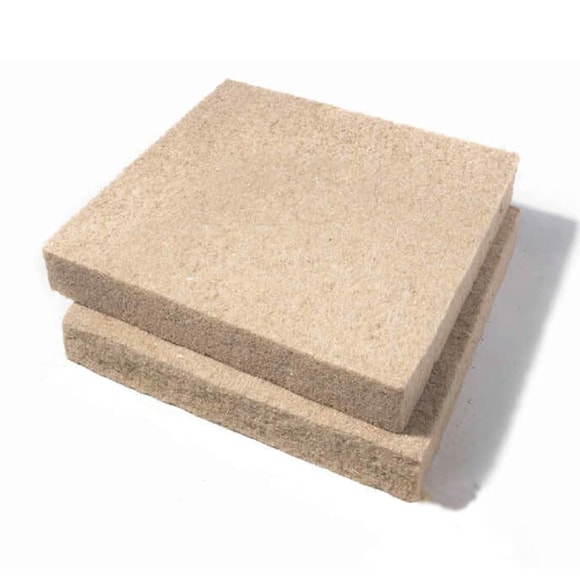 Dormer windows are a common feature of dormer bungalows, as they provide natural light and ventilation to the loft. However, dormer windows can also be a source of heat loss and gain, as they have a large surface area and are exposed to the external temperature. Therefore, insulating your dormer windows can help you improve the comfort and efficiency of your home, as well as reduce noise and glare.
Dormer windows are a common feature of dormer bungalows, as they provide natural light and ventilation to the loft. However, dormer windows can also be a source of heat loss and gain, as they have a large surface area and are exposed to the external temperature. Therefore, insulating your dormer windows can help you improve the comfort and efficiency of your home, as well as reduce noise and glare.
There are two main options for insulating dormer windows: replacing the windows with more energy-efficient ones or adding secondary glazing to the existing windows. Both options have their pros and cons, and the best one for you will depend on your budget, preference, and the condition of your windows.
Option 1: Replace the Windows
This option involves removing the old windows and installing new ones that have better insulation properties. This can be done using double or triple-glazed windows, which have two or three layers of glass separated by a gap filled with air or gas. The gap acts as a barrier that reduces the heat transfer between the inside and the outside of the window. The glass can also have a low-emissivity coating, which reflects the heat back to the source, and a solar control coating, which blocks the sun’s rays.
The main advantage of this option is that it provides the highest level of insulation and performance for your dormer windows, as it can reduce heat loss and gain by up to 80%. It also improves the appearance and security of your windows and reduces condensation and mould problems.
The main disadvantage of this option is that it is more expensive and complicated than the other option, as it requires you to buy and install new windows, and possibly modify the window frames and sills. It also changes the look and character of your dormer bungalow, which may affect its value and appeal.
Option 2: Add Secondary Glazing
This option involves adding an extra layer of glass or plastic to the inside of the existing windows, creating a gap between the two layers. The gap acts as a barrier that reduces the heat transfer between the inside and the outside of the window. The extra layer can be fixed or removable and can have different types of opening mechanisms, such as sliding, hinged, or lift-out.
The main advantage of this option is that it is cheaper and easier than the other option, as it does not require you to replace the windows, and can be done by yourself or by a professional. It also preserves the original look and character of your dormer bungalow and can be removed if you want to restore the windows to their original state.
The main disadvantage of this option is that it provides a lower level of insulation and performance than the other option, as it can reduce heat loss and gain by up to 50%. It also reduces the amount of light and ventilation that enters the window and can cause condensation and mould problems if not installed properly.
How to Insulate Dormer Bungalow Floors
Insulating your dormer bungalow floors can help you keep your home warm and cosy, as it can prevent heat from escaping through the ground or the air gaps. It can also reduce the noise and vibration that travels through the floor, and improve the air quality and hygiene of your home. However, insulating your dormer bungalow floors can also be challenging, as you need to consider the type and condition of your floor, and the impact of the insulation on the floor level and the ventilation.
There are two main options for insulating your dormer bungalow floors: insulating between the joists and insulating over the joists. Both options have their pros and cons, and the best one for you will depend on your budget, preference, and the structure of your floor.
Option 1: Insulate Between the Joists
This option involves installing insulation between the wooden beams that support the floor, also known as the joists. This can be done using mineral wool, rigid foam boards, or spray foam, depending on the depth and shape of the joists. The insulation should be fitted snugly and securely, leaving no gaps or air pockets. You should also add a vapour barrier on the warm side of the insulation, to prevent moisture from condensing and causing dampness or rot.
Once the insulation is in place, you need to cover it with a layer of plywood, chipboard, or floorboards, and finish it with your preferred flooring material, such as carpet, laminate, or tiles. You may also need to add some ventilation to the floor space, to allow air to circulate and prevent overheating or condensation.
The main advantage of this option is that it allows you to insulate the entire floor, and achieve a high level of thermal performance. It also preserves the original floor level and appearance and does not affect the ceiling height or the door frames.
The main disadvantage of this option is that it is more disruptive, costly, and time-consuming than the other option, as it requires you to lift up the existing floor, and possibly relocate some pipes or wires. It also reduces the floor space and storage capacity in your loft, which may affect your storage or living arrangements.
Option 2: Insulate Over the Joists
This option involves adding insulation on top of the existing floor and covering it with a new layer of flooring. This can be done using rigid foam boards, which are cut to fit the shape and size of the floor, and attached with screws or adhesive. The insulation should be continuous and seamless, leaving no gaps or thermal bridges. You should also add a vapour barrier on top of the insulation, to prevent moisture from condensing and causing dampness or rot.
Once the insulation and vapour barrier are in place, you need to install a new layer of plywood, chipboard, or floorboards, and finish it with your preferred flooring material, such as carpet, laminate, or tiles. You may also need to adjust the height of the door frames, the skirting boards, and the stairs, to accommodate the extra thickness of the insulation.
The main advantage of this option is that it is less disruptive, cheaper, and faster than the other option, as it does not require you to lift up the existing floor or relocate any pipes or wires. It also preserves the floor space and storage capacity in your loft, which may be important if you use it for storage or living.
The main disadvantage of this option is that it provides a lower level of insulation and performance than the other option, as it does not insulate the joists, which can still cause heat loss and draughts. It also raises the floor level and reduces the ceiling height, which may affect the appearance and comfort of your loft.
Conclusion
Insulating a dormer bungalow is crucial for optimizing comfort and energy efficiency. Conducting a thorough home energy audit helps identify areas needing attention. The roof, a major source of heat loss, offers options like insulating from inside or outside, each with its considerations of cost and disruption.
Dormer window insulation involves choosing between more energy-efficient replacements or adding secondary glazing. For floors, decisions between insulating between or over joists affect thermal performance and space. Proper insulation not only enhances comfort and reduces energy bills but also adds value, making it a valuable investment for UK homeowners seeking efficient living spaces.

Samuel Hitch
Managing Director
Buy Insulation Online.
Leave A Reply
Your feedback is greatly appreciated, please comment on our content below. Your email address will not be published. Required fields are marked *










